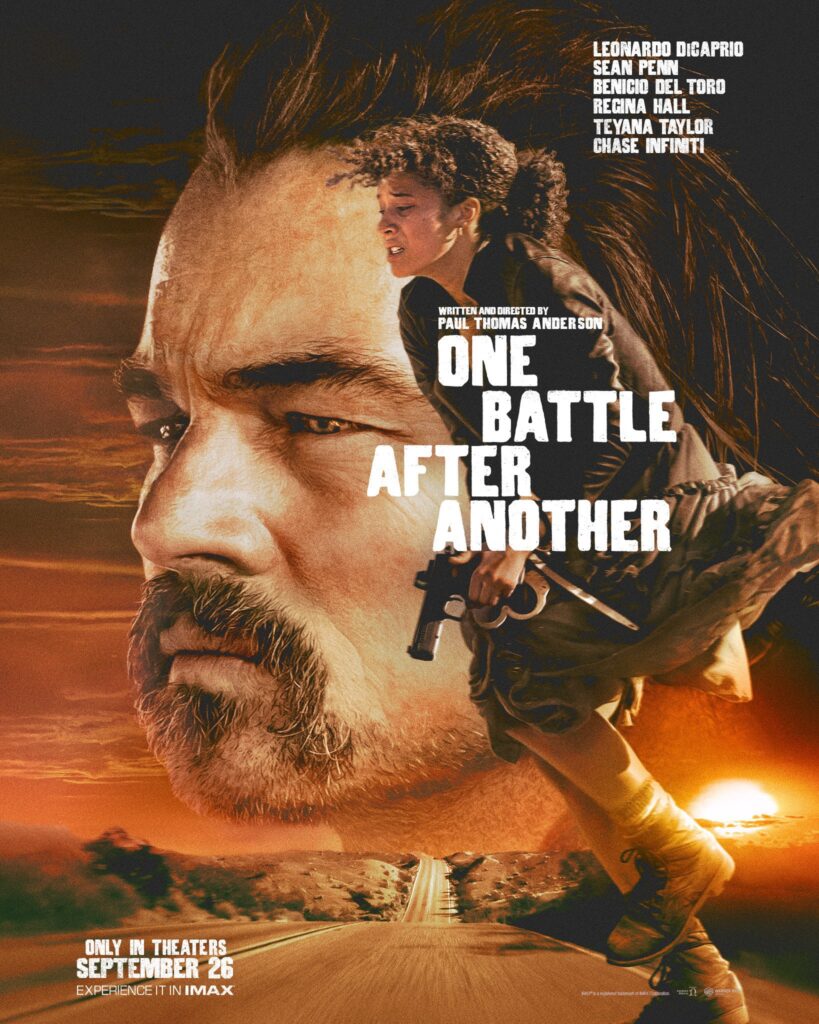When a film with a heavyweight cast, a visionary director, and explosive ideologies hits the screen, it’s hard not to pay attention. One Battle After Another is doing exactly that — making its case as one of 2025’s most talked-about films, and spotlighting Teyana Taylor in a role that cements her arrival as a commanding presence in cinema.
The Premise: Revolution, Family, and Fallout
Written and directed by Paul Thomas Anderson, One Battle After Another is loosely inspired by Thomas Pynchon’s Vineland, though it forges its own path in tone and narrative.
At its core:
- A militant group called the French 75 stages daring attacks—freeing detainees, hitting banks, wreaking havoc on symbols of authority.
- Perfidia Beverly Hills, played by Teyana Taylor, is a radical and charismatic force within French 75. Her relationship with Pat Calhoun (later Bob, played by Leonardo DiCaprio) is at once collaborative, romantic, and troubled.
- After a botched robbery and a crackdown by Col. Steven J. Lockjaw (Sean Penn), Perfidia is forced into hiding and assumed dead. Meanwhile, Bob reluctantly retreats from the revolution with their daughter, Willa (Chase Infiniti).
- Sixteen years later, when Perfidia’s enemies resurface and Willa vanishes, Bob must re-engage the revolution to save his child—and reckon with his past.
Picture this: a father, off-grid and stoned, thrust back into a violent world he’d tried to leave behind. And a mother, once a radical, whose choices reverberate through time.
Teyana Taylor’s Moment to Shine
Taylor’s casting in this film feels like a long-awaited turning point—not just in her career, but in how Hollywood views her dramatic potential. Reviewers and observers agree that her performance as Perfidia is magnetic and layered.
Some highlights:
- Risk & vulnerability. Perfidia is not a straightforward “heroine” — she’s flawed, intense, and driven by ideas. Taylor brings out the messy humanity in her character, delivering scenes where power, desire, betrayal, and despair coalesce.
- Bold visuals & bold choices. One of the most talked-about images from the film’s promotions is Perfidia firing a machine gun while pregnant — a strikingly symbolic moment that Taylor handles with gravitas.
- On-screen chemistry & resonance. Taylor and DiCaprio navigated a dynamic where ideologies, personal demons, and emotional fragility collide. Taylor has said that Perfidia is “misunderstood, selfish — always in survival mode.”
- Recognition & momentum. Critics and commentators are already pointing to this as a breakout dramatic moment for her, potentially marking a shift in how she’s cast and received going forward.
In short: she doesn’t just stand out—she anchors the film’s emotional and ideological center.
Directing, Style & Tone
Paul Thomas Anderson is known for ambitious, character-driven works—Boogie Nights, There Will Be Blood, Phantom Thread—but this is his first film in decades explicitly set in the present era.
Some stylistic takeaways:
- Genre-blending. One Battle After Another mixes action, satire, political thriller, and even stoner comedy. It’s chaotic by design, and the tonal shifts underline the instability of its world.
- Visual ambition. Released in IMAX and VistaVision 70mm, the film leans into spectacle—the desert chases, explosive sequences, and visceral tension get full scale treatment.
- Narrative nonlinearity. The story jumps across time—flashing between 16 years past and present—to reflect how wounds and choices echo across eras.
- Political undercurrents. While it’s not a manifesto, the film’s critique of power, authority, surveillance, and radicalism is ever-present. In many ways, it asks: when your revolution fails, what becomes of you?
Reception & Impact
The early buzz around One Battle After Another has been strong:
- It opened with $22.4 million in North America and held well globally.
- Audiences have given it an “A” CinemaScore, and PostTrak feedback suggests strong word-of-mouth.
- Critics have praised its energy, ambition, and performances, even where they debate its coherence or satirical excess.
- Many view it as Anderson’s most commercially daring film yet—and a potential awards contender.
For Taylor, in particular, this film could be a turning point. It’s the sort of role that prompts fresh recognition — not just as a musical or pop culture figure, but as a serious dramatic presence.
Why You Should Watch It
- To see Teyana Taylor transform. Her performance is not just a supporting flourish—she holds the screen.
- To witness a director push boundaries. PTA steps into more overt spectacle here while retaining character-driven depth.
- For a story that rides on tension & philosophy. It’s wild, messy, provocative—but never dull.
- To engage with the questions it asks. Identity, revolution, motherhood, betrayal, legacy — all in the crucible of a world in constant upheaval.
If you like, I can help you prepare a review or reaction piece after you see the movie, or suggest how you might frame it for your audience (local, regional, genre fans, etc.). Do you want me to do that next?
